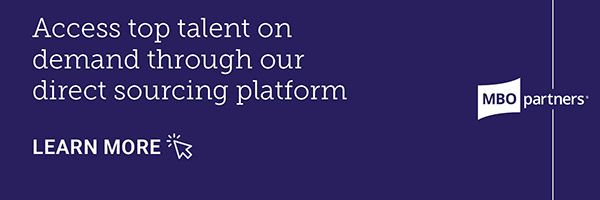Creating an Effective Contingent Labor Program: Introduction

- Companies are increasingly recognizing the need for agility and flexibility within their workforce.
- The independent professional population continues to grow throughout the US, and it’s essential to consider this group when building out a strategic and agile team.
- This introduction launches a series delving into topics relevant to building an effective contingent labor program.
Unsurprisingly, companies are increasingly recognizing the need for agility and flexibility within their workforce. Recent layoffs among traditional W2 employees have prompted a reevaluation of conventional employment models. As organizations navigate economic uncertainties and rapid technological advancements, the spotlight increasingly turns towards the strategic integration of independent contractors & a contingent workforce. This shift not only addresses immediate cost concerns but also unlocks massive benefits that empower businesses to thrive in an era defined by change.
From startups to established enterprises, independent contractors’ pivotal role in fostering adaptability, innovation, and overall resilience is front and center. The independent professional population continues to grow throughout the US, and it’s essential to consider this group when building out a strategic and agile team.
Engaging, scaling, and optimizing an external workforce can feel like a lot. In this series, we’ll explore the things to consider when building your contingent labor program. We will delve into these topics:
Compliance: Classification of your external workforce is essential. Misclassification can lead to legal ramifications, so it’s essential to understand and adhere to relevant regulations.
Talent access: How to develop effective strategies for identifying, recruiting, and managing external talent.
Reporting: Establish clear metrics for measuring contractor performance, payments, hours, etc.
Scalability & Flexibility: How to design the external workforce model to be scalable, allowing it to quickly adapt to changing demands. This scalability enhances the flexibility to upscale or downscale the workforce as project needs evolve.
PMO: Exploring the benefits of having a dedicated program management office.
Technology Integration: Leverage technology to streamline the management of external workers. Implement robust tools for project collaboration, communication, and performance tracking to ensure seamless integration with the existing workforce and systems.
Keeping Independents Happy: Independents can pick and choose what projects they take on. Understanding their needs, wants, and demands is pivotal to working with top talent.
International Population: There are some key differences to consider when engaging independents internationally.
Implementation & Adoption: Company-wide implementation is essential when building out your external workforce program. This not only includes understanding and adaptation across departments, but system integration and project planning.
Categories
Subscribe to the Insights blog to get weekly insights on the next way of working
Source, engage, and manage top talent talent through MBO's direct sourcing platform
Learn more about MBO
Learn how to start, run and grow your business with expert insights from MBO Partners
Learn how to find, manage and retain top-tier independent talent for your independent workforce.
MBO Partners publishes influential reports, cited by government and other major media outlets.
Research and tools designed to uncover insights and develop groundbreaking solutions.



